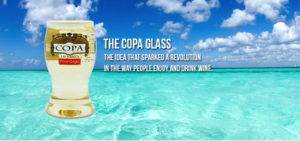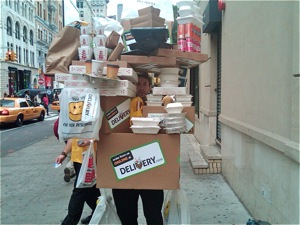In October 2008, Barbara Goodstein, Chief Marketing Officer of AXA Equitable was only slightly nervous as her company launched an unprecedented customer retention program called MyRetirementShop.com. Creating a “retirement portal” more focused on “value add” than lead generation, Ms. Goodstein was moving her company into unchartered territory, delivering a “marketing as service” program that became far more successful than even she had anticipated.
Since its inception, MyRetirementShop.com has attracted over ½ million visitors who spend a whopping 11 minutes browsing highly relevant content from top experts like Kiplingers, Service Magic and MyRecipes.com. Current customers were quick to thank AXA for this resource with not just words of praise but also by buying more AXA products, generating revenue far beyond the program’s cost. The press responded to this innovative marketing approach with over 200 stories that yielded an equivalent of $4.0mm in paid media coverage.
Since the old proverb “success has many fathers but failure is an orphan” also applies to marketing, it is often difficult to get the real story on what it takes for innovations like MyRetirementShop.com to come into being. In this case, however, after an extensive interview with Ms. Goodstein in which she reviewed the development process, it became very clear that her journey has provided a textbook case on innovation, yielding the following seven critical elements of success.
1. Innovation Starts at the Top
Ms. Goodstein is no stranger to innovation. Having guided the highly effective 800-Pound Gorilla advertising campaign for AXA into being four years ago, she knows a big idea when she sees one and she knows how to stretch a budget for maximum impact. But she is also the first to acknowledge that “innovation more than anything starts at the top” and that if her CEO, Kip Condron, didn’t encourage and support innovation, her efforts would never see the light of day. With senior management saying, “We should try multiple creative options and see what’s going to work,” and encouraging innovation with financial incentives, the virulent skepticism that typically inhibits new idea development is diffused if not silenced.
2. Listen to Your Customers
The impetus for MyRetirementShop.com sprung from an annual study AXA conducts among its customers. According to Ms. Goodstein, “We built MyRetirementShop.com on years of data that revealed the topics that were most relevant to pre-retirees, so we just had to take all of this content and make it accessible.” Pre-retirees noted their interest in everything from home and family to health and fitness, from travel to finance, from self-improvement to entertainment. So it came as no surprise to Ms. Goodstein that these topics gained traction with their target. The only surprise was divergence between the expressed interest in volunteering and concierge services in the research versus the actual behavior on the site. Ms. Goodstein speculates that disinterest in these areas may be more a reflection of current economic realities than the ultimate value of the content.
3. Make Sure It’s Truly Innovative
Before developing MyRetirementShop.com, Ms. Goodstein and her team did an extensive review of retirement portals and competitor’s websites. When it was clear there was nothing like it out there, the AXA team then “did our own screening to find the best possible content providers.” According to Ms. Goodstein, “It took over a year to line up all the partners, and an internal SWAT team dedicated to every area of the site” to pull it all together. To insure relevance, they insisted that all the content had national reach and users could even “drill down by zipcode.” And though much of MyRetirementShop.com content exists on other sites, AXA is the first to aggregate it all in one place, and is the only retirement portal without highly intrusive advertising.
4. Service First, Then Branding
The intention of MyRetirementShop.com from the beginning was to be a service – not an advertisement, a service that would help retain existing customers, and one that would reflect the deep expertise of AXA Equitable and its sincere commitment to help consumers with retirement planning. “We wanted the site to be value add” noted Ms. Goodstein, “and we didn’t want it to be a commercial for us.” This commitment to service had a strong influence on the design of the site, which has almost no AXA ID other than their 800-pound gorilla who serves as “branding anchor and host.” The now familiar gorilla sits on top of each section and offers a “pithy audio message” that Ms. Goodstein anticipated “would create more of a connection” with site visitors.
5. Service First, Then Sales
Once the site was launched, AXA representatives were provided with a number of tools to share it with existing customers. Direct mail, email and brochures described the content and invited customers to visit the site. Then the unexpected happened, this so-called retention program started generating sales. “For $40 worth of DM, our reps generated an incremental $60,000 in sales,” added Ms. Goodstein with glee. Suddenly the sales team that usually put the kibosh on programs considered “non-revenue generating,” embraced the site, acknowledging its power to increase sales among existing customers and even to attract new ones. By providing a genuine service to its customers and prospects, AXA found a friendly way to break the ice and renew the conversation about retirement with a now receptive target.
6. Innovation Requires Perseverance
MyRetirementShop.com took over two years from conception to launch, with multiple hiccups along the way. Getting the technology right was challenging and the site, which was developed by internal IT resources, went through several iterations. “It took us a while to get it right,” acknowledged Ms. Goodstein and of course, she did not have “universal support initially.” Importantly, AXA Global and top management voiced their confidence in the project, which Ms. Goodstein gained by outlining a clear vision, defining the content with crisp wireframes and by providing prototypes that fueled expectations. By demonstrating what it would look like and never wavering from the quest, Ms. Goodstein and her team were able to build consensus from top to bottom, setting the stage for its ultimate success.
7. Don’t Rest on Your Laurels
Despite exceeding expectations on every metric, Ms Goodstein and her team continue to seek ways to improve MyRetirementShop.com. New original content is in the works that will simultaneous enhance the visitor experience and increase the natural page rankings on the search engines. New content partners that could increase consumer appeal are being evaluated. “We are also going to change the enroll button so interested visitors can reach us more easily” added Ms. Goodstein who marveled at the unexpected benefits of a true “value add” program, “Because we are willing to work so hard, people want to connect with us.”
Bottom line: Marketing innovation is neither easy nor linear, requiring support from the top, a clear vision from the start, steadfast determination along the way and ultimately a desire to do right by the consumer, a consumer that will thank you many times over with not just words of praise but also their pocketbooks.





